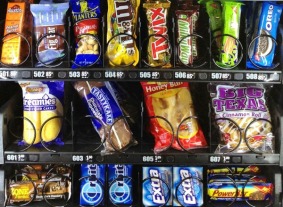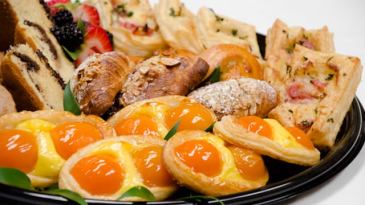GREAT QUESTION!
Did you know? In Q1 of 2015 Millenials (although the exact years are debated, think current 20 to 36-year-olds) surpassed all other generation and now holds the largest share of the American workforce. So this Millennial thing, is a pretty big deal!
What does Millennial generation really mean?
Here are the major demographic points:
- 77 Million individuals in the US
- Median income for younger Millenials is $25K, while older Millennials average $45k
- Only 21% of millennials were married in 2014 compared to 45% of baby boomers at their age.
- 1 in 4 have a Bachelor’s degree or higher, making them the most formally educated generation
- 38% of Millennials are bi-lingual
Here’s a great chart:

How does this affect the workplace?
This article “5 ways Micro Markets Serve the Millennial-driven Workplace” lays them out for us. We highlighted the takeaways for you!
Strong Company Culture
Millennials are not easily “impressed by the sheer scale of a business, its age, or the general buzz that surrounds it (Deloitte, 2016).” Therefore, companies striving to attract and retain Millennials should invest in tools that will foster a strong culture, including organization transparency, technology, and food. MicroMarkets offer quality products, open layouts, multiple payment options (including fingerprint and payroll deduct), and employee discounts.
Work-Life Balance
Having a MicroMarket is a great way to show millennial employees that their employer is not only interested in work output, but their nutritional input. According to Forbes, for Millennials, “a job is no longer just a job ― it’s their life as well.” To attract and retain this type of worker, companies need to demonstrate mutual investment in their lives by offering ways to maintain the lifestyle they envision for themselves while working hard for the organization. That includes diverse product offerings, dietary foods, and the ability to make choices based on nutritional information.
Open, Collaborative Space
MicroMarkets lend themselves well to modern spaces. The open flow of the market combined with comfortable seating, such as couches or booths, gives the millennial worker a place other than the boardroom to interact and collaborate with coworkers. MicroMarkets are the new water cooler.
Healthy Food Options
Nearly 80% of Millennials say that they are using healthy foods as a preventative measure for illness and disease (USA Today, 2015). MicroMarkets can help employers capitalize on this growing trend towards healthier lifestyles by stocking nutritional foods, including gluten-free and protein-rich options. Items such as Jack Link’s beef jerky and Wonderful pistachios are simple offerings to start with. Believe it or not, many common vending products serve this purpose if you know what to look for. KIND Bars, Sargento cheese sticks, and Orville Redenbacher popcorn are some healthier gluten-free snacks. (But be careful, as gluten-free products can vary by brand!) MicroMarkets also enable the availability of fresh fruits, vegetables, yogurt, salads, and other prepared foods. These products can be leveraged to tie the breakroom experience into a company’s overall wellness initiatives.
Local, Sustainable Products
MicroMarkets enable stocking of locally-sourced products, thus protecting the environment and supporting the local economy. According to a 2015 Nielsen study, 66% of Millennials say they’re willing to pay more for products and services that come from companies that are committed to positive social and environmental impact. Millennials want to feel good about the products they’re purchasing and their impact on the world. Providing local products enhances positive experiences and loyalty with MicroMarkets.





























 this? or THIS!
this? or THIS!
 this? or THIS!
this? or THIS!
 this? or THIS!
this? or THIS!





















